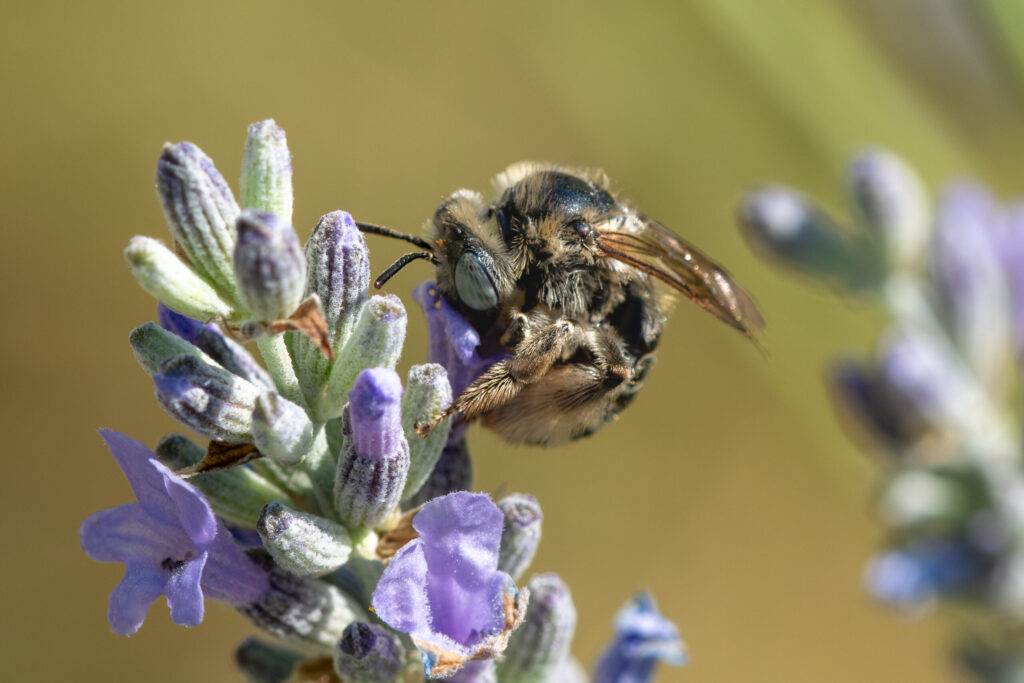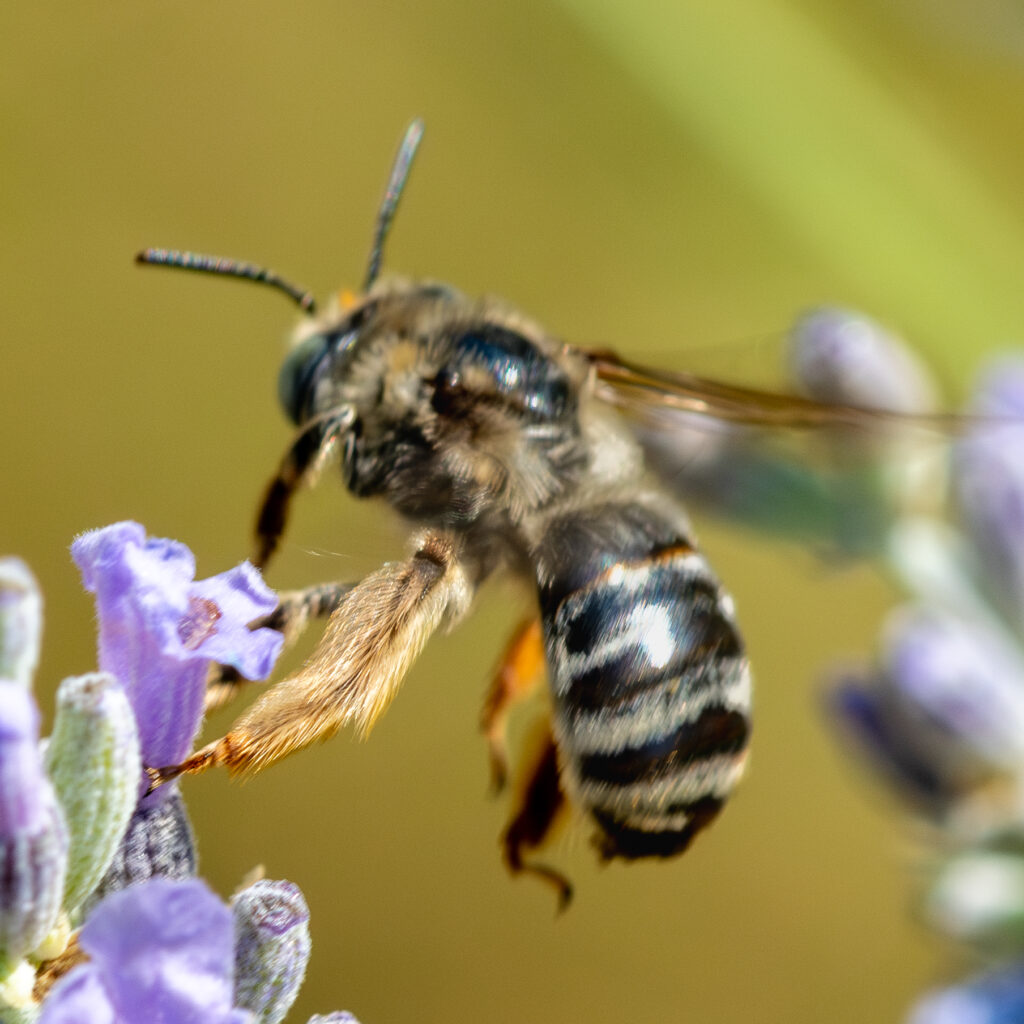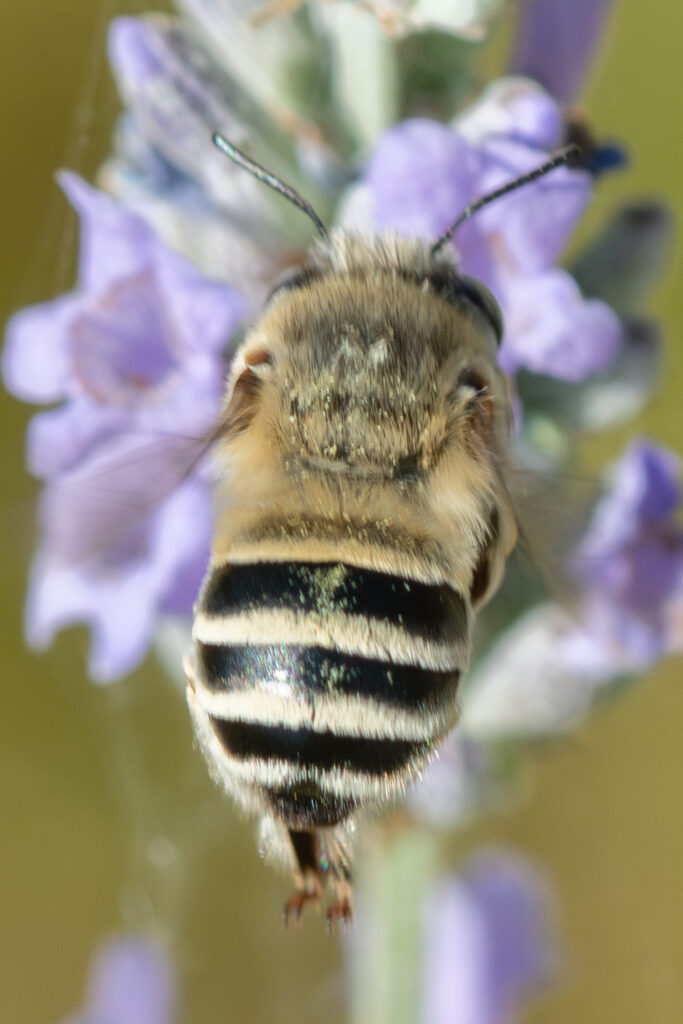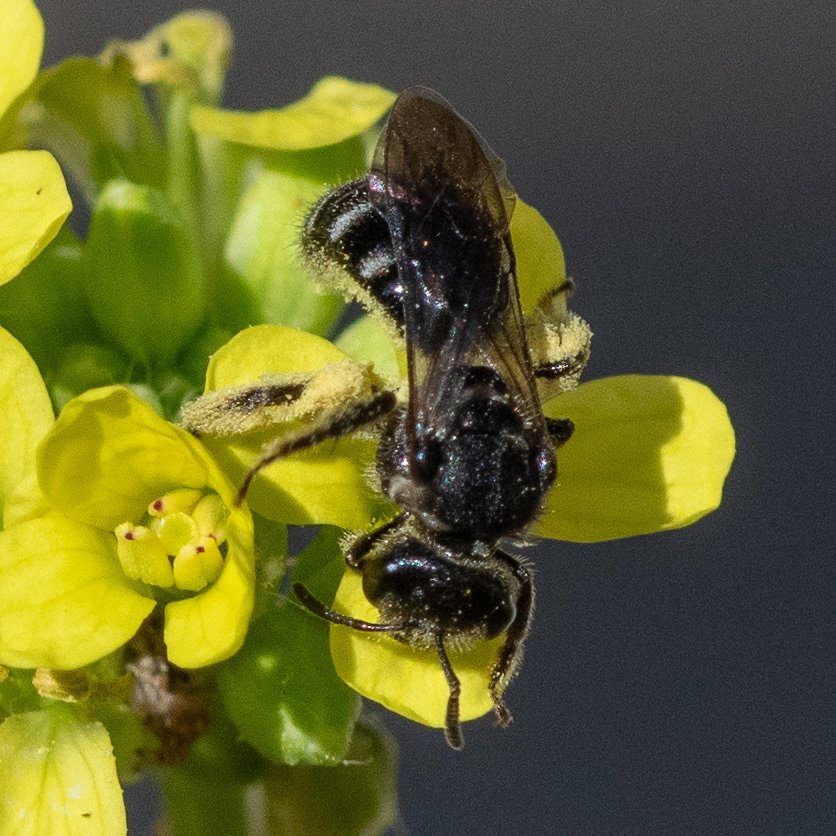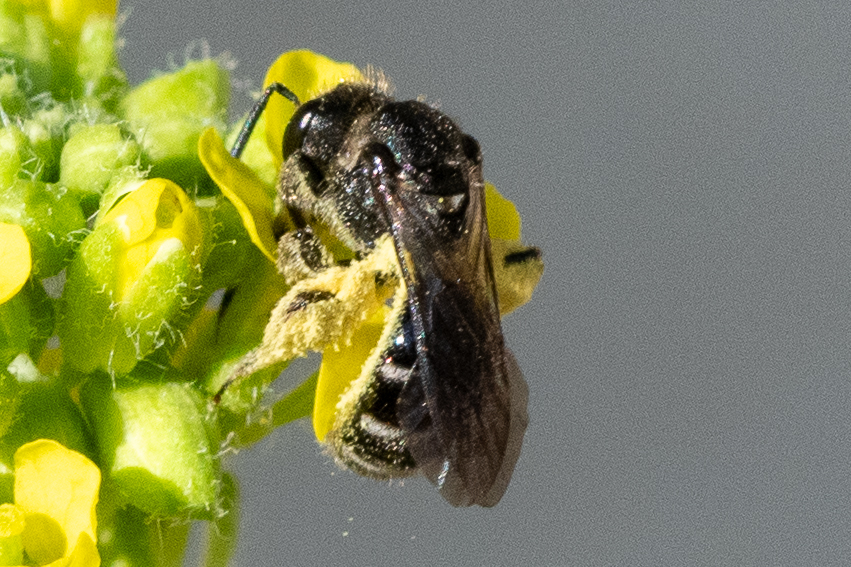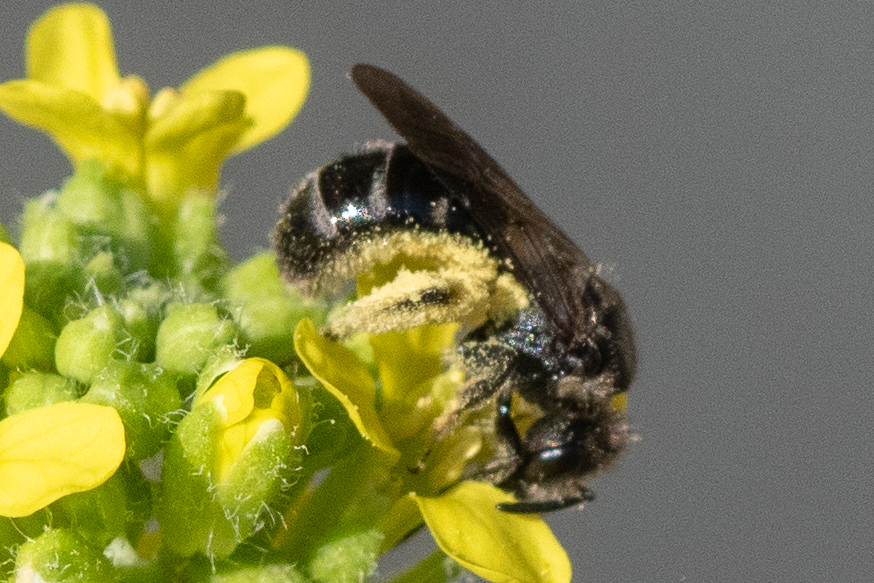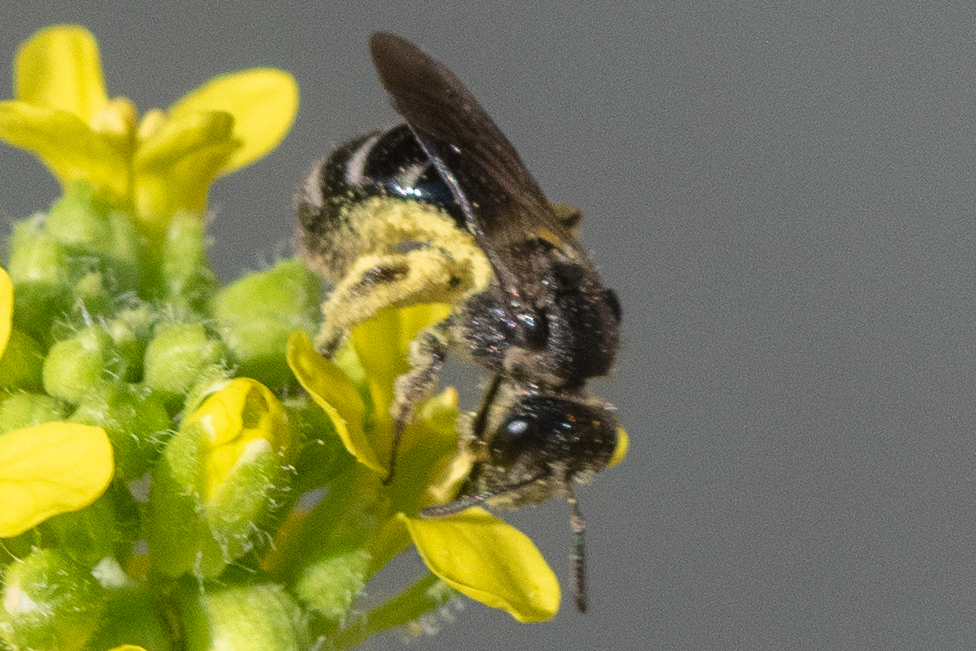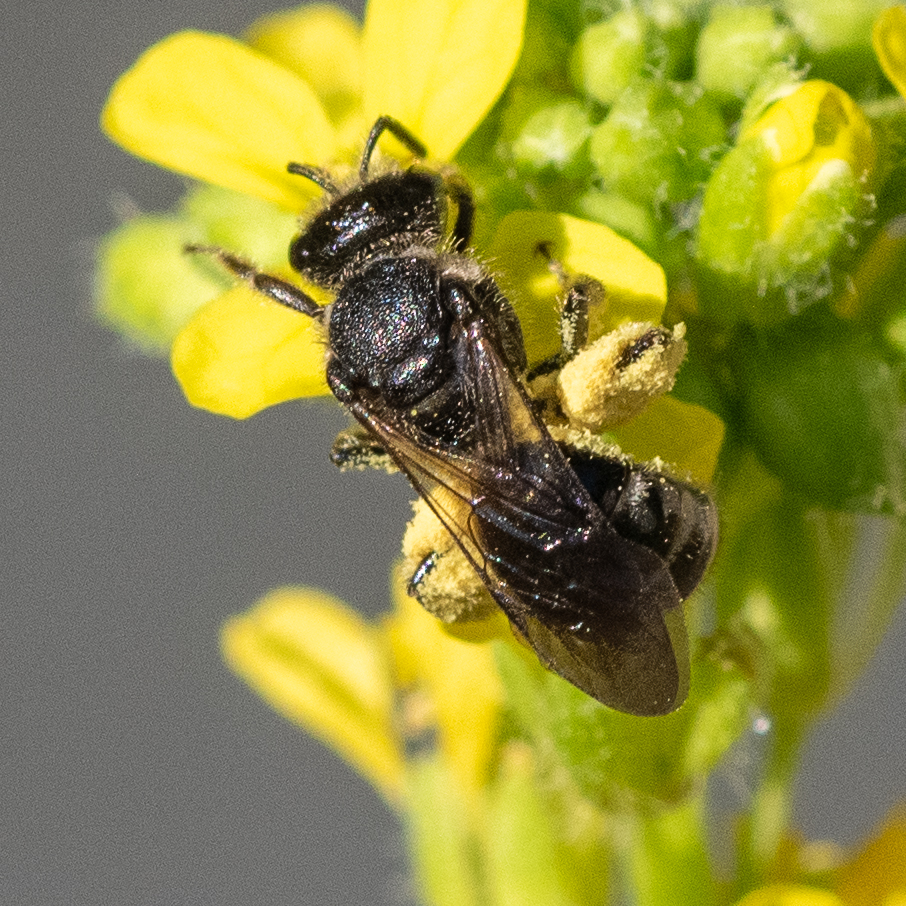Yesterday I finally broke out the bug photography gear and started trying to record some of the species we have here. The most abundant bee by far is Apis mellifera, the common (non-native) honey bee. In the interest of having a complete record, I should take some pictures of it, and maybe I’ll get around to it one day, but given that it’s so abundant here, and the native bees are so much more interesting (I don’t know them, whereas I know the honey bee), I haven’t done it yet.
This morning, after returning from my morning bird walk (not much to speak of, but a lot of orioles and oak titmice everywhere), I documented at least three native bees, and I’m guessing that they’re from two different tribes: one from the megachilidae, and two from the halictidae. I’m still waiting on the ID experts over at Bugguide.net to confirm these wild guesses.
All of the bees are buzzing around two different non-native flowers: Provençal lavender and wild mustard. Both flower species are imported from Europe, but they behave very differently: the lavender stays put but grows into ginormous clumps that attract scores of pollinators all day every day; the mustard is a weed that reproduces like mad and covers large areas with many plants.
Here’s a little photo gallery of the bees I saw today:
Now that it’s high summer and I’m going to be estivating indoors for the most part, I’m going to reread The Bees in Your Backyard by Wilson and Carril (Princeton UP, 2016); it’s chock full of good info that I’ve already forgotten since I read it the first time. Plus hundreds of gorgeous photos…
Some minor ID notes, in case I need to refer back to them later:
The bee that I’m tentatively ID’ing as a Lasioglossum is tiny and almost all black; what yellow there was on it seemed to be mustard pollen rather than actual bee color.
The one I think is a megachilid was huge, with prominent yellow hair bands between its abdominal segments. It was also very, very busy–I had a hard time getting any pictures of it perched, since it buzzed from flower to flower so rapidly! Its buzz was also louder and more insistent than that of the honeybees.
The one that I’m really unsure of was less brightly colored than the putative megachilid, but much more colorful than the little Lasioglossum(?). Like the one I’m calling a megachilid, it had hair bands between abdominal segments, but they were less prominent, and the abdomen was less massive than the other species.

